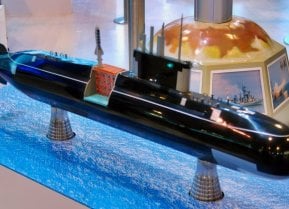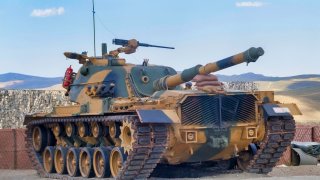M48: Why This Tank Was Such a Warrior on the Battlefield
Thanks to its steady upgrades, the M48 proved to be one of the most successful post-World War II era tanks built.
Meet the M48 Tank: After the Second World War, the United States military began to develop a new medium tank to replace the M26 Pershing and M4 Sherman. The result was the M46, the first tank to be named after General George S. Patton Jr. – who had been one of the earliest American proponents and advocates of the use of a tank to break through enemy lines. Tank evolution was moving at a rapid pace, and this led to the development of the M47, also named after Patton, but it was largely seen as a stopgap – a marriage of the T42 tank prototype and M46 chassis.
The M48 Patton Tank, Explained
Even as the M47 entered production, the U.S. military began the development of an entirely new design. This resulted in the introduction of the M48 Patton. However, like the previous U.S. tanks, the M48 was also designed hurriedly and rushed into production – in part due to the fact that the Korean War had exposed the U.S. Army’s alarming shortage of modern tanks.
Despite some “teething troubles,” the M48 became one of the most widely used medium tanks in the world.
The M48 vehicle was designed with three compartments: the driver’s compartment; the fighting compartment where the gunner, loader, and tank commander were positioned; and the engine compartment. This layout provided the loader ample room to pick up and quickly load shells. The M48, which was equipped with a 90mm gun, had been designed for combat in Europe against Soviet tanks of the early Cold War era and it proved more than up to the task. It has been reported that a good tank crew in the M48 could put the first round on target ninety percent of the time, even if it required excellent teamwork and communication.
The M48 was also designed with a single-piece casting M48 turret, which offered 120mm (4.7 inches) of armor at the front, yet was just 76mm thick at the sides. It was not ballistically well-shaped however, and could all too easily be taken out by enemy fire. This was noted during the Indo-Pakistani War of 1965, where the Pakistan’s M48 Patton tanks suffered heavy losses, particularly in actions against the Indian Army’s Centurions. When the U.S. military deployed the M48 to Vietnam, many tank crews fixed sections of tank tracks to the sides of the turret to provide extra defense against the RPG-7 anti-tank rockets employed by the People’s Army of Vietnam (PAVN).
Even with those issues, the M48, which was produced until the early 1960s, became the U.S. military’s workhorse during the Vietnam War with hundreds sent to Southeast Asia.
M48: Improved Pattons
The Patton was steadily improved during its operational life. The M48A1 version featured an improved commander’s cupola, which allowed the M2HB 12.7mm machine gun to be operated and reloaded from within the vehicle; while the M48A2 offered an improved powerplant and transmission. The upgraded Patton also had a redesigned rear plate, and improved turret controls, as well as improved rangefinder and new ballistic drive and bore evacuator for the main gun.
The M48A5 was the first Patton variant to be fitted with the powerful 105mm M68 gun, the American-made version of the British L7 tank gun.
Thanks to its steady upgrades, the M48 proved to be one of the most successful post-World War II era tanks built. Thousands are still in service around the world. Iran has a significant number of upgraded M48 tanks in its arsenal, while Greece, Lebanon, Morocco, South Korea, Taiwan, Thailand, and Turkey all currently maintain significant numbers of the M48 Patton as well.
About the Author
Peter Suciu is a Michigan-based writer who has contributed to more than four dozen magazines, newspapers and websites. He regularly writes about military hardware, and is the author of several books on military headgear including A Gallery of Military Headdress, which is available on Amazon.com. Peter is also a Contributing Writer for Forbes.


